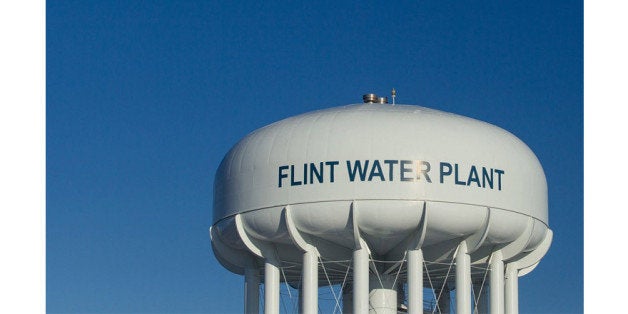
President Obama's visit to Flint, Michigan this week draws public attention to the nation's water crisis. It is an opportunity to set in motion desperately needed reforms and place the water crisis exactly where it belongs: at center stage in the upcoming presidential campaign.
Over the past century droughts and environmental disasters across the United States have directed short-lived attention to water problems. The poisoning of families living in Love Canal in upstate New York grabbed the public's attention for a time, forcing the federal government and Congress to provide emergency funds to take corrective actions and pass regulations on the appropriate storage and disposal of hazardous materials. The ongoing water crisis in Flint, Michigan, has provided a wake-up call--because it has led to the "discovery" of poisoned water in urban areas all around the country. Ideally, this will spur Congress and the Administration to address the country's deteriorating critical infrastructure. If action is not taken, the outrage that will greet each new report of children being poisoned from the water in their homes will, predictably, erode the public's confidence in the government at local, state, and national levels even further. This makes water a national security issue.
The American Society of Civil Engineers has for years given America's infrastructure a D or D+ rating. The Environmental Protection Agency (EPA) estimates that by 2030 the nation's water infrastructure system will need $384 billion in improvements to ensure safe and drinkable water. For much of the country, the water infrastructure is antiquated and degraded; even the sampling procedures for lead are dangerously outdated, leaving as high as 10 percent of the population exposed to unsafe levels of lead in their drinking water from the testing alone. Not to mention, if lead is discovered through these sampling procedures, cash-strapped cities are faced with rising costs of chemicals needed to treat both the water and the pipes.
According to Richard Rushforth a PhD candidate at Arizona State University (ASU) in Civil, Environmental and Sustainable Engineering who studies US and global urban water policies, "Current water quality regulations need to be expanded to protect both human and infrastructure health." Chloride, which is used to treat water for palatability, is a leading cause of corrosion in pipes. "Nationally, chloride levels in water are only regulated by "secondary maximum contaminant limits" (MCLs), but these limits don't align with the threshold where chloride levels begin to leach lead from pipes," added Rushforth. This was one of the contributing factors to the Flint water crisis, which, since it began in April 2014, has exposed nearly 15,000 children to lead contamination and its myriad long-term consequences. Road salt, the leading man-made source of chloride in US rivers, is in frequent use on Michigan's icy highways. Although its definitive link to the Flint water crisis is not official, efforts to reduce its use or mitigate its effects--by, for example, finding alternative ways to de-ice roads and implementing better watershed management--will go a long way toward contributing to improved water quality. Defining a holistic set of water quality standards, improving water treatment facilities, and refining storm-water management will also help address the problem.
Currently, US cities sidestep chloride's corrosive effect on pipes (and subsequent lead leaks) by treating water with phosphate. Unfortunately the world's supply of phosphate is dwindling, which leads the price of the already expensive chemical to spike due to volatility. This was an additional factor leading to the Flint water crisis, and the problem of affording phosphate treatment is not isolated to the Rust Belt. The EPA estimates that some ten million homes and businesses obtain water from lead pipes, which rely on phosphate to inhibit corrosion and prevent lead from entering the water supply. To solve the nation's water crisis cities, states and the federal government will need to make some hard decisions.
Rushforth recommends cities and states take a more proactive and innovative approach to solve their water problems, "we can't rely solely on technical innovations - crises like Flint are as much a result of technical breakdowns and governance failures. State and local governments have the ability to innovate new water governance systems that ensure safe and affordable drinking water and infrastructure health. We can look to municipal water reforms in Seattle, Washington and other cities for example of water governance reforms that ensure transparency, accountability, and cost recovery."
Congress, also, needs to change and start acting like adults and end the ongoing gridlock, which has made it impossible for the federal government to take advantage of low interest rates to invest in the nation's deteriorating critical infrastructure. It is time for Congress to invest in America's infrastructure while updating water quality standards, watershed management, and water infrastructure overall.
Fron Nahzi specializes in international development and sustainable solutions. The views expressed here are his own.